Is Life Nothing But A Dream?
Directed & Produced by Shakeena Johnson
Running Time: 5 Minutes 22 Seconds
Country: United Kingdom
Personal Confirmatory Study 2013 Media Shay
[Summary]
Duration: 5 Minutes 22 Seconds
Is Life Nothing But A Dream? is a documentary which explores the significance of dreams and looks at the overview of dreams. The documentary looks at what dreams mean and why we have them. Throughout the documentary there will be interviews from students, teachers/lectures and the general public in which they will be answering questions about dreams as we try to uncover the significance of them.
[Proposal]
Is Life Nothing But A Dream? is a documentary which examines as well as explores the overview and significant of dreams. The documentary will feature interviews from the general public as well as important figures such as psychology lectures and English lectures who will be answering some questions that I have devised about dreams and dreaming. The documentary will also be focusing on the metaphorical side within a dream, the reality effect of dreams as well as the significance of dreams and the psychological side of dreams. This project will showcase creativity as well as diversity when it comes to exploring and examining. The physical resources required for this project will be a camcorder with a tripod, a digital camera, microphones which will be accompanied with a boom mic, cables and wires and lights i.e. flood lights. The materials required for this project will be Final Cut Pro and Microsoft Word. Supporting the development side of this project, I will be consistently staying true to myself and completing the different elements of this project that I know needs to be completed.
100% of my concentration and effort will be put in the project not only to make it the best but to make it something that I will personally be proud of. My proposed supporting research for this project will be looking at dreams, dream metaphors, the format of documentaries as well as documentaries about dreams, Sigmund Freud and his views and theories on dreams and i’ll be looking at information about a drug called DMT which according to results can make you go into a dream world. The result of this project is to explore what people think about dreams and whether or dreaming exists and holds an answer into a future? I’ll also be looking at editing techniques, camera angles and shots. The anticipated outcome for this project hopefully will resolve with me having a 15 minute documentary which will be 100% completed, a 30 second trailer, a poster which will help advertise the documentary, a designed detail storyboard for the re-enactment scene and constructive research.
Research – Dreams
Dreams are a vision of emotions, images, thoughts and ideas that people reconstruct whilst sleeping. When dreaming you can gather several different thoughts that might correlate with your real life events. Dreams can sometimes play tricks on your mind and make you think that certain things are there or are going to happen. Each kind of dream will consist of certain things for example; if you are having a dark scary dream (known as a nightmare), your dream could possible feature dark and scary things like murders and scary faces where as if you have fantasy dream, your dream could feature things like a dragon or even a fairy.There are different outcomes to some dreams. Sometimes you can control what happens in your dreams and other times you can’t. There are different types of dreams that people have. They are:
False Awakening
” A false awakening is a vivid and convincing dream about awakening from sleep, while the dreamer in reality continues to sleep “ – REFERENCE – http://en.wikipedia.org/wiki/False_awakening
My understanding and interpretation of experiencing false awakening within a dream is where someone is asleep and they awaken in there sleep aware of the fact that even though they are awake in the dream, they are asleep on reality.
Hallucination
“A hallucination is a perception in the absence of a stimulus which has qualities of real perception” – REFERENCE – http://en.wikipedia.org/wiki/Hallucination
My understanding and interpretation of experiencing an hallucination within a dream is where someone sees something that may or may not be there however instead of them seeing it for exactly what is they see additional things alongside the image.
Flashback
“A flashback, or involuntary recurrent memory, is a psychological phenomenon in which an individual has a sudden, usually powerful, re-experiencing of a past experience or elements of a past experience” – REFERENCE – http://en.wikipedia.org/wiki/Flashback_(psychology)
My understanding and interpretation of experiencing a flashback within a dream is where someone quickly revisits/remembers something that has happened in the past. I feel that having a flashback is very similar to having deja vu. I believe that when a person has a flashback they are either choosing to remember a particular experience that they had; whether or not it be a good experience or a bad experience.
Daydreams
“Daydreaming is a short-term detachment from one’s immediate surroundings, during which a person’s contact with reality is blurred and partially substituted by a visionary fantasy, especially one of happy, pleasant thoughts, hopes or ambitions, imagined as coming to pass, and experienced while awake” – REFERENCE – http://en.wikipedia.org/wiki/Daydream
My understanding and interpretation of experiencing daydreaming is where someone dreams about something that they desire. You may daydream about a particular place or situation that you would like to be in or you may daydream about a someone.
Déjà Vu
“Déjà vu is literally already seen, is the phenomenon of having the strong sensation that an event or experience currently being experienced had been experienced in the past” – REFERENCE – http://en.wikipedia.org/wiki/Deja_vu
My understanding and interpretation of experiencing deja vu within a dream is seeing something again that you have seen before. I believe that experiencing Deja Vu and experiencing a flashback is kind of the same thing just with different elements to the dream.
Nightmares
“A nightmare is an unpleasant dream that can cause a strong negative emotional response from the mind, typically fear or horror, but also despair, anxiety and great sadness” – REFERENCE – http://en.wikipedia.org/wiki/Nightmares
My understanding and interpretation of experiencing a nightmare within a dream is where you see a scary image which could be of a fictional person/character. With a nightmare you experience something that you don’t want to although its unexpected. You also experience fear along with the nightmare. Occasionally you might remember the nightmare however its not common that you usually will.
Ordinary Dreams
“Dreams are successions of images, ideas, emotions, and sensations that occur involuntarily in the mind during certain stages of sleep” – REFERENCE – http://en.wikipedia.org/wiki/Dream
My understanding and interpretation of a dream is where you sleep and picture something in your mind that may include images of people or objects which may or may not stand for something metaphorically. Most ordinary dreams are interrupted by a different dream i.e a nightmare or a flashback.
Lucid Dreaming
“A lucid dream is any dream in which one is aware that one is dreaming” – REFERENCE – http://en.wikipedia.org/wiki/Lucid_dream
My understanding and interpretation of experiencing lucid dreaming within a dream is where you are aware that you are asleep whilst you are awake in your dreams. Within the dream this could involve the person dreaming either flying in the air or floating above ground. Many different examples that have been shown of lucid dreaming of the years have been adapted and expressed through films like Waking Life and Peter Pan. I feel that lucid dreaming is quite similar to experiencing a false awakening.
Sexual Dreams
“A nocturnal emission or wet dream is a type of spontaneous orgasm, involving either erection and/or ejaculation during sleep for a male, or lubrication of the vagina for a female” – REFERENCE – http://en.wikipedia.org/wiki/Sexual_dream
My understanding and interpretation of experiencing a sexual dream within a dreams is where you start to develop sexual feelings and thoughts whilst dreaming about a particular person. This dream experience requires you to think sexually about another person especially if you are seeing that person in the dream. The official name for this kind of dream is a wet dream.
Research – Sigmund Freud
“Sigmund Freud born 6 May 1856 – 23 September 1939) was an Austrian neurologist who became known as the founding father of psychoanalysis” REFERENCE – https://en.wikipedia.org/wiki/Sigmund_Freud
“The process by which the latent content is transformed into the manifest content is known as the “dream work”. The dream work can disguise and distort the latent thoughts in the following four ways:
1: Condensation: Two or more latent thoughts are combined to make up one manifest dream image or situation.
2: Displacement: Instead of directing the emotion or desire toward the intended person or object it is transferred onto a meaningless / unrelated object in the manifest dream.
3: Symbolism: Where complex or vague concepts are converted into a dream image. For this, the mind may use the image of a similar sounding (more recognizable word instead or use a similar looking less intrusive object. According to Freud, dream symbols are for the most part sexual in meaning thus many dreams (but not all) have a sexual correlation” – REFERENCE – http://dreams.insomnium.co.uk/dream-theory/introduction-freud-theory-on-dreams/
My Understandings From The Research
After collecting and gathering all the research on Sigmund Freud, I now have a clear understanding on what his theory about dreams were. Freud believed that dreams represent wishes and desires that people want. He believed that many different objects within a dream metaphorically stand for something and that image that they see in the dream is attached to something in there life. One of the things that Freud believed when it came to having/experiencing a sexual dream is that when a man dreams about object like a tree or a tree trunk, ties, rockets or stick it was a secret symbol that was in regards to a male orgasm. Not only this but he also believe that when a woman dreams about boxes, suitcases or even it is related to a female orgasm. Many people have argued against this theory believing that Freud may have exaggerated this point. Freud published more the 320 books, essays and articles during his life time. Majority of the books that he published were about the topics that he studied such as dreams, everyday life, sexuality and egos. One of his most famous and well studied books about dreams was ‘The Interpretation of Dreams’ which was published in 1900. The Interpretation of Dreams is the original published book by Sigmund Freud. The book identifies Freud’s theories and beliefs on dreams.
Research – Documentaries About Dreams
The Man Who Paints The Future
Research
“David Mandell predicts the future from his dreams. To record his dreams, he paints the event and then takes a photograph of himself and the art in front of a bank showing the date and time…BEFORE the event happens” – http://www.tv.com/shows/extraordinary-people/the-man-who-paints-the-future-1250253/
BBC Horizon – Why Do We Dream?
Research
“What the film reveals is that much of what we thought we knew no longer stands true. Dreams are not simply wild imaginings but play a significant part in all our lives as they have an impact on our memories, the ability to learn, and our mental health. Most surprisingly, we find nightmares, too, are beneficial and may even explain the survival of our species” –
http://www.fulldocumentary.net/science/default.asp?action=listing&id=1325
Research – Dreams in Society
In society today, the subject of dreams is rarely touched on because of how diverse the topic of dreams is. The fascination of dreams has become so popular within society that it has been adapted several times into films, songs, television, art, dance, literature and many other sectors. It’s not often that dreams or dreaming is expressed through music because of how challenging the topic of dreams is however some musicians take on the challenge and write/sing beautiful songs revolving around dreams or dreaming. The one song about dreams that I think represents and approaches dreams is Beyonce’s 2009 song ‘Sweet Dream’. This song which is all about falling asleep and hoping that whilst your asleep you see the one person that you love the most and hope that the dream is either a sweet dream or a beautiful nightmare.
I have highlighted bits from the lyrics which I feel mentions/express’ dreams the most. The first line opens with ‘Every night I rush to my bed, with hopes that maybe I’ll get a chance to see you when I close my eyes’. She is starting the song by saying that she can’t wait to fall asleep and see the man the she wants in her dreams. The next lines which I highlighted were ‘clouds filled with stars cover your skies’ and ‘what kind of dream is this’. She is asking the question ‘What kind of dream is this?’ and This could be because she isn’t aware of what kind of dream she is having hence the next line ‘you can be a sweet dream or a beautiful nightmare’. She goes on to say ‘Either way I don’t wanna wake up from you’.
(Turn the lights on!)
Every night I rush to my bed
With hopes that maybe I’ll get a chance to see you when I close my eyes
I’m going outta my head
Lost in a fairytale
Can you hold my hands and be my guide?
Clouds filled with stars cover your skies
And I hope it rains
You’re the perfect lullaby
What kind of dream is this?
You can be a sweet dream or a beautiful nightmare
Either way I, don’t wanna wake up from you
(Turn the lights on!)
Sweet dream or a beautiful nightmare
Somebody pinch me, your loves to good to be true
(Turn the lights on!)
My guilty pleasure I ain’t goin nowhere
Baby, long as you’re here
I’ll be floating on air cause you’re my, you’re my….
You can be a sweet dream or a beautiful nightmare
Either way I, don’t wanna wake up from you
(Turn the lights on!)
I mention you when I say my prayers
I wrap you around all of my thoughts
Boy, you’re my temporary high
I wish that when I wake up you’re there
To wrap your arms around me for real and tell me you’ll stay by my side
Clouds filled with stars cover the skies
And I hope it rains
You’re the perfect lullaby
What kind of dream is this?
You can be a sweet dream or a beautiful nightmare
Either way I, don’t wanna wake up from you
(Turn the lights on!)
Sweet dream or a beautiful nightmare
Somebody pinch me, your loves to good to be true
(Turn the lights on!)
My guilty pleasure I ain’t goin nowhere
Baby, long as you’re here
I’ll be floating on air cause you’re my, you’re my….
You can be a sweet dream or a beautiful nightmare
Either way I, don’t wanna wake up from you
(Turn the lights on!)
Tattoo your name across my heart
So it will remain….
Not even death can make us part
What kind of dream is this?
You can be a sweet dream or a beautiful nightmare
Either way I, don’t wanna wake up from you
(Turn the lights on!)
Sweet dream or a beautiful nightmare
Somebody pinch me, your loves to good to be true
(Turn the lights on!)
My guilty pleasure I ain’t goin nowhere
Baby, long as you’re here
I’ll be floating on air cause you’re my, you’re my….
You can be a sweet dream or a beautiful nightmare
Either way I, don’t wanna wake up from you
Turn the lights out
Chris Brown’s 2012 song ‘Don’t Wake Me Up’ is another song which touches on the topic of dreams. Personally, I feel that the video explores dreams more than the actual song. The video which was directed by Colin Tilley is based around Chris Brown waking up, following a mysterious lady through a door, dying within the dream and then suddenly waking up again and repeating the same process all over again.
The film industry has turned the dream theme into a huge blockbuster franchise. Films like Alice in Wonderland and The Wizard of Oz are two of the world’s most popular dream films in the world of cinema. Each film conveys its own message about dreams and dreaming as well as display memorable and lovable characters that experience another world that they don’t know of. The contrast between the two stands out like a sore thumb considering the different elements that are put into the film. Although the dream sequences are formed differently, the outcome of the dream is kind of the same. When you watch both The Wizard of Oz and Alice in Wonderland you as the viewer believe what the character experiences as well as feel what they are feeling. For me personally I think that is the best thing about films which revolve around dreams. Alice in Wonderland is American fantasy animated film which was directed by Clyde Geronimi, Wilfred Jackson and Hamilton Luske. The film is based primarily on the novel Lewis Carroll’s Alice’s Adventures in Wonderland which over the last 5 decades has been adapted in so many different ways from film to television to Broadway to ballet. The story follows an English girl named Alice who daydreams about living wonderland, a world in which Alice herself created. Whilst in this dream world she meets several different characters which are all key figures to the plot of the story which eventually lands her in trouble whilst she is in her dream.
Prior to The Wizard of Oz and Alice in Wonderland becoming Hollywood blockbuster movies, they were children’s novels. Both of these books are the world’s most famous fantasy books about dreams. The story of The Wizard of Oz revolves around a young girl named Dorothy who gets knocked unconscious during a storm and enters a dream world where she is stuck and is trying to find her way back home. The dream that takes place in The Wizard of Oz can become somewhat confusing and sometimes hard to understand and this is simply because of how many times this story has been adapted. The dream that occurs is different from all the other dreams that most people are not aware. Having studied The Wizard of Oz there is a confusing side to the story. The confusing side is that Dorothy doesn’t go into her dream like a normal person would. In the beginning, Dorothy gets hot on the head by a window frame, falls onto her and is unconscious but however by the end of the book she finds herself lying in her bed and surrounded by her family. The story of Alice in Wonderland revolves around a young girl who falls asleep and awakens in wonderland where she meets some interesting fictional characters and later on ends up in trouble in her dream. There are a lot of similarities between the two books. The similarities between both books are both books are centered around a young female who falls asleep, both books contain fictional character that both the young females meet and engage on a journey with, both books are set in magical worlds, both book convey a clear message at the end of them.
Some books don’t always explore the theme of dreams as much as Alice in Wonderland or The Wizard of Oz. A clear example of this is John Steinbeck’s book Of Mice and Men. This book is mainly based on Steinbeck’s life experiences and other social issues. There are a lot of themes within Of Mice and Men such as friendship, freedom and hope but I personally believe that one of the main themes in the book is dreams. The dreams in the book are often kept a secret especially at the beginning. Throughout the book, there is one animal that represents dreams and this animal is the rabbit. Lennie’s obsession with rabbits is constantly mentioned throughout the book. Lennie is often caught saying throughout the book “George says we’re gonna have alfalfa for rabbits” or “George gonna say I done a bad thing. He ain’t gonna let me tend no rabbits”. Many of the dreams in the book are blocked for example; when we are first introduced to Curley’s wife she immediately blocks there sunlight by stepping in front of it, which is also like she is blocking there dreams. “Both men glanced up, for the rectangle of sunshine in the doorway was cut off”.
Television often touches on dreams but never really explores it to the fullest. There has never really been a television programme in which the whole series is 100% dedicated and revolved around dreams. It’s often a case that most television shows have a single episode which consists of a dream sequence where the main character enters a world that they don’t know. A clear example of this is an episode from ABC’s hit TV show Ugly Betty. The episode Million Dollar Smile is centered around a dream which occurs when Betty hits her head and enters a dream world where she is everything and more. This episode explores being unconscious within a dream however some people would argue that being unconscious isn’t a type of dream. The dream sequence in this episode revolves around Betty getting her braces removed but before
Because of how huge the topic of dreams is television producers tend not to bring/explore the topic of dreams. Besides Ugly Betty, the other TV shows that have had a single episode which is centered around a dream or a dream sequence is:
- Once Upon A Time
- Star Trek Voyager
- Charmed
- Doctor Who
- Red Dwarf
- That’s so Raven
Research – Metaphorical Dreams
Whenever someone dreams, it is very often that they see a subject, image or person in their dreams which metaphorically mean something. Psychoanalysis’ who have studied dreams over the last couple decades have researched and assessed dreams and the metaphorical meaning behind certain dreams. There have been certain objects and images that have gathered a mythical story behind them which might mean something for instance it’s a myth that when you dream about fish or fishes, it might mean that either you are pregnant or someone you know is pregnant and it’s also a myth that when you see someone from your past in your dreams they are trying to tell you something regarding you future. Although these myths and tales might not be true they have generated some hype behind them. For the past couple years, a lot of authors have published books about dream metaphors and what they might mean. Some of the books that have been published are below. I decided not to include this research into the final documentary.
Research Matching Ideas Development
Matching the research with the personal ideas development wasn’t hard for me. The research simply required me to look at all things that are in relation to dreams like films, music, books etc. Because of the topic, this allowed me to do further research especially when it came to looking at other documentaries which were about dreams. When it came to the ideas developement, I based everything off of my research. My brainstorm showed me what I need to look at and work on, the camera shots and angles were all based off of the research. I looked at the conventional shots and angles that are usually used in a documentary. I used all the research that I looked up and put it into my ideas development.
Evaluation of Research
A major part of the pre-production process throughout this project was the research element. I conducted research based around my chosen topic of choice which was dreams. I chose to research topics that would match my personal ideas development and would be featured in my documentary. Firstly, I started the research off by looking and gathering information on Sigmund Freud who was a neurologist and a founding father of psychoanalysis. My reasoning for researching Sigmund Freud was mainly for his theories on dreams which has now become a worldwide topic. It interested me to see what he thought and believed about dreams. From this I decided to conduct further research not just on Freud and his life and career but also on the books that he has published throughout his life especially the books revolving around his theory and his psychological understanding on the subject of dreams. Because the Freud research was my main focus point at the beginning, I decided to further my study on dreams and I started researching about the kind of dreams that we have. Because there are so many different kinds of dreams, I mainly decided to research dreams that the world is familiar with so I researched about false awakenings, hallucinations, flashbacks, daydreaming, Déjà Vu, nightmares, lucid dreaming, sexual dreams and normal ordinary dreams. Not only did I just research on dreams, I also researched what the possible meaning behind these dreams could be. I wanted to include some images alongside the research I had found on the dreams so that in case the reader wasn’t aware of what that particular type of dream was or what it might look like they would see. I made sure that I chose the picture that I felt matched the description of the dream well. Most of the research that I found came from Wikipedia including the researching surrounding Freud and the research about dreams. This is mainly because it was the only place where majority of the information was being held. After I finished research on Freud and dreams I realized that at this point, I had two very strong and important pieces of research that fitted well with my personal idea development and so I decided to branch out and do deeper research on dreams; this time not just focusing on the actual dreams but looking at dreams in media. Because my final major project is a documentary, I chose to look at documentaries mainly looking at the format and the treatment of a documentary. I also chose to look at particular documentaries that were about dreams so that I could see how they structured there documentary and see whether or not the platform that I was trying to build in my documentary would work. For this I started searching for the actual documentary itself so that I could watch it and the analyze it. Once I found the documentary, I embed the documentary into WordPress and began analyzing it; using my own analysis as research. I wanted to make sure that I covered all elements surrounding dreams so I decided to research dreams within society. I wanted to make this research a vital part to this project so I not only decided to do deeper research on dreams within society but I also decided to analyze this topic to the fullest. So I started researching dreams within music looking at particular songs in society that talk about or mention dreams. I looked at musicians such as Beyonce and Chris Brown who both have had a successful song which was about dreaming. Not only did I look at the song and the artist, I also studied and analyzed the lyrics from the songs to get a clear understanding of what particular dream they are talking about and how they have expressed it in the song. I also analyzed the music videos to these songs which represent and display the dream to the fullest. I researched dreams within films mainly looking at the dream element and dream sequence within films such as how they represent dreams and how they explore them and how the topic of dreams has changed and affected the film industry. As well as researching dreams on the big screen I also researched dream sequences on the small screen touching on how television doesn’t really explore dreams that much and I looked at the TV shows that have touched on this subject and made an episode on dreams and how the producers used there create side to explore dreams. I researched dreams within literature looking at fantasy books like The Wizard of Oz and Alice’s Adventure in Wonderland that approach and explore dreams.. After gathering all this information about dreams within society, I wanted to include two more pieces of additional research which would 100% support and help my project so I decided to research metaphorical dreams. For the metaphorical dreams research, I chose to simply just look at what certain images and objects within a dream could mean relying on the psychoanalysis work that some people have studied and the myth and tales that people believe. For the research I used and looked at local forums where they discuss dreams however most of my information came from Wikipedia and IMDb.
In conclusion, I find the research that I conducted to be very useful as not only did it help me when it came to me in the ideas development but it also gave me a clear understanding when it comes to the topic of dreams. I now plan to use all of this research to help me through the process of this documentary.
Ideas Development & Pre-Production
[Ideas & Topic]
As part of my ideas development I created a brainstorm of what the documentary will be about, the research I was taking out for this project, planning out the locations for the documentary, figuring out the advertising element of the documentary, constructing the aim, making a list of the equipment I will need and use, gathering research on demographics such as gender and age as well as gathering research on dreams, Sigmund Freud and his theories about dreams, different documentaries, dream metaphors and dreams in society, figuring out the structure of the documentary and what scenes I will film, the format of the documentary as well as the running time of the documentary and finding the audience. I also created a planning schedule which will show my plan for throughout the process.
|
Planning Schedule for Is Life Nothing But A Dream?
|
||
| Week 1 Mon 11 Mar – Fri 15 Mar | Start Project. Brainstorm ideas for the project | |
| Week 2 Mon 18 Mar- Fri 22 Mar | Start gathering research for my project. | |
| Week 3 Mon 25 Mar – Fri 29 Mar | Continue to gather research. Start to complete some of the written work for the pre-production | |
| Week 4 Mon 1 Apr – Fri 5 Apr | Continue to gather research and start to work on some development ideas | |
| Week 5 Mon 8 Apr – Fri 12 Apr | Continue to gather research and start to work on some development ideas | |
| Week 6 Mon 15 Apr – Fri 19 Apr | Submit research and design development for final outcome. Gather all the correct equipment. Get ready to start filming for project | |
| Week 7 Mon 22 Apr – Fri 26 Apr | Begin working on project. Start filming for project. | |
| Week 8 Mon 29 Apr – Fri 3 May | Continue work on project | |
| Week 9 Mon 6 May – Fri 10 May | Continue work on project | |
| Week 10 Mon 13 May – Fri 17 May | Wrap up filming for project and start editing the footage. | |
| Week 11 Mon 20 May – Fri 24 May | All my work must be 100% completed and finished | |
| Week 12 Mon 27 May – Fri 31 May | Show starts to go up on Friday 31st May | |
| Week 13 Mon 3 Jun – Fri 7 Jun | Assessment Private View Thursday 6th June | |
| Week 14 Mon 10 Jun – Fri 14 June | ABC Moderator Thursday 13th June Show comes down on Friday 14th June | |
[Locations]
My main shooting location for this documentary will be inside Westminster Kingsway College. This is where majority of the interviews will be held for lecturers/teachers, students within the college and scheduled interviewees who i’ll be inviting to the college. I will also be shooting around Central London mainly in Oxford Street, Tottenham Court Road and Camden Town. These are the where most of my establishing shots will be filmed for the intro of the documentary just to familiarize the viewer of where this documentary is set and being filmed.
(ABOVE: Picture of Westminster Kingsway College)
(ABOVE: Picture of Oxford Street)
(ABOVE: Picture of Camden Town)
[Treatment]
The beginning of the documentary will start with establishing shots revealing the location of the documentary to the audience/viewer. It will also be presenting the research search that I collected over the pre-production process of this project. It will also feature some video footage and one or two interviews from my interviewee’s. The middle of the documentary will feature more interviews from different subjects ranging from students at Westminster Kingsway College to the general public. It will also show an re-enactment of someone sleeping and tossing and turning whilst sleeping and some previous video footage on dreams. The ending of the documentary will result with an outcome of us gathering research and finding the aim.
[Aim]
The aim of this documentary is to explore, examine and inform the audience about dreams. I also want to gather other peoples experiences and theories on dreams to see whether or not I can uncover the significance of dreams. I want to approach this topic by finding out all the information I can not just based on primary and secondary research but also from the general public.
[Audience & Research Analysis]
In a quest to find my target audience for this documentary, I created a questionnaire on dreams which was target for people between the age of 11 – 33+. The questionnaire which were created via Survey Monkey, were simple and basic questions which asked the general public about there experiences with their dreams. After analyzing the results from the questionnaire I have now discovered my target audience as well as the demographics for which my project. To help get the general public to participate in my questionnaire, I posted a link on my Twitter page and kindly asked them to participate in my questionnaire. The images below are the screen grabs below which showcase the results from the questionnaire.
[Camera Shots & Angles]
For this documentary I will be using different camera shots and angles. Usually when it comes to documentaries, the traditional camera angles and shots that are used are mainly XLS (Extra Long Shot), LS (Long Shot) and MCU (Medium Close Up). I have decided to use some shots that are unusual to use within a documentary simply because I want to experiment with using different shots. The camera shot sizes that I plan to use are:
- XLS – Extra Long Shot
- LS – Long Shot
- MLS – Medium Long Shot
- MS – Medium Shot
- MCU – Medium Close Up Shot
- CU – Close Up Shot
These shots will be used mainly for the establishing shots at the beginning, middle and ending of the documentary. The reason for using these shot for establishing shoot is to inform the viewer of where the documentary/interview will be taking place. They will also be for the interviewing shots. The reason for using this shot is to get a slightly closer look at whatever object will be featured in the scene. The camera and lens movements that I will use in my documentary are:
- Zoom In -> Zoom Out
- Track Out -> Track In
- Crab Left -> Crab Right
[The Working Title]
Constructing a working title for this project has been challenging because I’ve had to change my originally final major project idea several times. Originally, I had chosen to do a documentary based on a cake shop in Victoria called Peggy Porschen and the title that I came up with was ‘Peggy Porschen: Master of Cakes’ however my idea to go forward with the documentary got foiled as I never heard back from the shop regarding my project so I had to change my idea. The second idea that I developed for my final major project was to do a short film about a couple who‘s love or each other was dangerous. I came up with the title ‘destruction.’ however, I wasn’t 100% happy with this idea so I cancelled it and created a new short film which was about a girl who falls asleep and wakes up in her dream and enters an unknown world which she is not sure of. The title for this project was called ‘False Awakening’ because I had based it upon the theme of the story and dream which was False Awakening. Because of the difficulty of my wanting to use SFX for this project, I had to look at the time management in regards to making the short film which I had very little time to make it so I had no choice but to change my idea one last time. So, I changed my idea to what it is now, which is a documentary about dreams. ‘Is Life Nothing But A Dream?’ is my final title and idea for the project. I chose this title because after I brainstormed what I wanted the documentary to be about, I truly felt that this title really matched the aim of the documentary. The clever thing that I find with the title is that it’s such a diverse question that it could be used during interviews and not only that but when you say the title you find yourself trying to find the answer to the question even without someone asking you. I am 100% happy with the title and I do not have any in tension of changing it.
[Format & Running Time]
Format: 16:9
Running Time: 5 Minutes
[The Attraction for an Audience]
The attraction for the audience is simply going to be the learning and understanding side to the documentary. Knowing that the audience is generally going to be inquisitive about the topic, I will be displaying knowledgeable truths and facts about dreams and dreaming to the audience. The information in the documentary may interest someone who is studying psychology or someone who is fascinated by this topic and wants to know more however I plan to make the documentary as diverse as possible so that it will be understandable and available for everyone to watch.
[Questions]
Below are the questions that I have devised which I will be asking the participants/interviewee’s during the interviews for my documentary ‘Is Life Nothing But A Dream?’ All of these questions are based around dreams with particular questions being subjected around dreams in society i.e. music, film, television etc.
- Have you ever viewed your life as nothing but a dream sequence?
- Do you think that all dreams have meanings behind them?
- Do you believe that dream predict the events that will happen in the future?
- Have you ever had a dream about something which has actually happened in real life?
- It’s common that most people generally forget there dreams, why do you think this is?
- Do you think it’s possible for us to control our own dreams?
- Do you believe that majority of the images we see in our dreams metaphorically stand for something?
- Have you ever found yourself having the same dream twice? If yes, did the same thing that happened in the first dream happen again in the second dream?
- When you watch films about dreams or dreaming, does it make you think more about dreams or not?
- Do you think the media has portrayed dreams in a realistic or an unrealistic way?
- Literacy is one of the main platforms that represent dreams. Do you think that books like Alice’s Adventure in Wonderland and The Wizard of Oz educate us about dreams or trick us?
[Voice Over Script]
“Dreams are something that we all have and are all completely confused by. Within a lifetime the average person will dreams 4-5 times in a night which amounts up to 131 hours”.
“This documentary is going to explore dreams and find the significance of dreams as well as looking at the possible meaning behind them”.
“To gather research and get a further insight into what dreams could mean, we visited Westminster Kingsway College in Kings Cross, Westminster to find out what some of the students think and feel about dreams”.
“The topic of dreams has become a worldwide fascinating topic which many people have studied. One person who’s interest in dreams has become a worldwide phenomenon is neurologist Sigmund Freud. His theory of dreams revealed his beliefs on the functions of dreams. He believed that there is a specific psychological technique through which dreams can be interpreted and that if the technique is successful accomplished, each dream is revealed as a physical structure”.
“Freud also believed that objects within a dream like a weapon, a tree trunk or balloons were all symbols which related to the dreams of a sexual man. He also believed that images of ovens, suitcases and boxes were related to dreams of a sexual woman”.
“The subject of dreams has become such a fascinated topic amongst society that it has been adapted and shaped in several different platforms such as literature, music, art, television etc”.
“As this documentary comes to an end, I leave you with one question…’Is Life Nothing But A Dream?”.
“A false awakening is a vivid convincing dream about awakening from sleep whilst the dreamer in reality continues to sleep”.
” A nightmare is an unpleasant dream that can cause fear or horror, but also despair, anxiety and great sadness”.
“A lucid dream is any dream in which one is aware that one is dreaming”.
“A flashback is a psychological phenomenon in which an individual has a sudden re-experiencing of a past experience”.
“Déjà Vu is the experience of having an previous event being experienced again”.
“Daydreaming is a dream in which a person’s contact with reality is blurred by a visionary fantasy”.
“A hallucination is a vivid perception of dreaming where one will image and see distorted or misinterpreted images which may not be real”.
[The lines within the script with the star sign at the end are the ones that didn’t make it into the documentary]
[Shooting Schedule]
|
Title: Is Life Nothing But A Dream? |
|
|
Production No. 1 |
|
| Director: Shakeena Johnson | Producer: Shakeena Johnson |
| Date | Scene No. | Internal / External | Location Name | Interviewees | Equipment Required: |
| 1/5/13 | 1 | External | Westminster Kingsway College | N/A | CamcorderTripod |
| 2/5/13 | 2 | Internal | Westminster Kingsway College | Yes – 3 | CamcorderTripodLapel MicHeadphones |
| 2/5/13 | 2 | Internal | Westminster Kingsway College | Yes – 2 | CamcorderTripod Lapel MicHeadphones |
[Pre-Production Pictures]
[Test Shots]
Test Shot of Damilola’s 1st Interview
The video above is a test shot of Damilola’s first interview. Originally this interview was meant to be used in the actual documentary however because of how bad the quality was and because the white balance wasn’t good I decided to make it a test shot video. For the test shot video, I chopped up the interview between me and Damilola in final cut pro and added the fade effect to the footage. This video is a clear example of what and the interviews were filmed and took place.
[Budget List]
Below is my estimated budget that I would need for this project. The company that would be supplying me production crew and equipment for this project would be Camberwell Studios. The starting budget for this project is £60,000. £24,780 out of the budget would be for the production crew hire which includes the hire of a director, cameraman, camera operator, sound engineer, auto-cue operator and a runner. £3,430 out of the budget would be for the equipment hire which includes a camera with a tripod, a auto-cue, and a boom mic. The overall amount to hire from Camberwell Studios is £28,210.
|
Budget List for Crew
|
||||
| Product | Cost of Product | No. of Days | Product Total | Overall Total |
| Director | £300 (Full Day) | 14 Days | £4,900 | |
| Cameraman | £350 (Full Day) | 14 Days | £4,900 | |
| Camera / Operator | £450 (Full Day) | 14 Days | £6,300 | |
| Sound Engineer | £350 (Full Day) | 14 Days | £4,900 | |
| Auto-cue Operator | £200 (Full Day) | 14 Days | £2,800 | |
| Runner | £120 (Full Day) | 14 Days | £1,680 | |
| £24,780 | ||||
|
Budget List for Equipment
|
||||
| Product | Cost of Product | No. of Days | Product Total | Overall Total |
| Camera including Tripod | £170 (Per Day) | 14 Days | £2,380 | |
| Boom Mic | £25 (Per Day) | 14 Days | £350 | |
| Auto-cue | £50 (Per Day) | 14 Days | £700 | |
| £3,430 | ||||
[Equipment]
The equipment that I will need for the pre-production process of my documentary will be:
- Camcorder
- Tripod + Tripod Plate
- Headphones + Lapel Microphones
- Boom Mic + Fish pole
- Camera
- Lights (Optional)
[Call Sheet]
| First Name: | Last Name: | Age: | Role in Documentary: | Occupation: |
| Natalie | Williams | 18 | Interviewee | Student |
| Ishmael | Caprice-Anderson | 19 | Interviewee | Student |
| Damilola | Kudus | 18 | Interviewee | Student |
| Sara | El-Batal | 18 | Interviewee | Student |
| Felipe | Freitas | 19 | Interviewee | Student |
[Edit Sheet]
| Counter From: | Counter To: | Scene Description: |
| 0:00 | 10:00 | Intro – Text for the Title |
| 10:00 | 10:13 | Fade to Black Effect |
| 10:13 | 17:20 | First Establishing Shot of Westminster Kingsway College |
| 17:20 | 22:08 | Second Establishing Shot of Westminster Kingsway College |
| 22:08 | 23:05 | Fade to Black Effect |
| 23:05 | 55:23 | Text – 1st Question (Have You Ever Viewed Your Life As Nothing But A Dream Sequence?) |
| 25:23 | 33:06 | Natalie Williams’ Interview |
| 33:06 | 47:02 | Sara El-Batal’s Interview |
| 47:02 | 55:23 | Damilola Kudus’ Interview |
| 55:23 | 1:48:21 | Text – 2nd Question (Do You Think That All Dreams Have Meanings Behind Them?) |
| 57:21 | 1:10:16 | Felipe Freitas’ Interview |
| 1:10:16 | 1:24:02 | Natalie Williams’ Interview |
| 1:24:02 | 1:30:07 | Ishmael Caprice-Anderson’s Interview |
| 1:30:07 | 1:48:21 | Sara El-Batal’s Interview |
| 1:48:21 | 1:49:09 | Fade to Black Effect |
| 1:49:09 | 2:46:14 | Text – Types of Dreams |
| 1:51:05 | 1:59:11 | False Awakening Image & Text |
| 1:59:11 | 2:08:01 | Nightmare Image & Text |
| 2:08:01 | 2:13:07 | Lucid Dreaming Image & Text |
| 2:13:07 | 2:21:13 | Flashback Image & Text |
| 2:21:13 | 2:27:14 | Déjà Vu Image & Text |
| 2:27:14 | 2:35:02 | Daydream Image & Text |
| 2:35:02 | 2:45:04 | Hallucination Image & Text |
| 2:45:04 | 2:46:14 | Fade to Black Text |
| 2:46:14 | 3:18:08 | Text – 3rd Question (Do You Believe That Dreams Predict The Events That Will Happen In The Future?) |
| 2:49:05 | 3:06:06 | Damilola Kudus’ Interview |
| 3:06:06 | 3:18:08 | Ishmael Caprice-Anderson’s Interview |
| 3:18:08 | 4:07:07 | Text – 4th Question (Do You Think That It’s Possible For Us To Control Our Dreams?) |
| 3:20:22 | 3:39:10 | Felipe Freitas’ Interview |
| 3:39:10 | 4:07:07 | Sara El-Batal’s Interview |
| 4:07:07 | 4:10:18 | Footage of First Book |
| 4:10:18 | 4:19:17 | Image of Book |
| 4:19:17 | 4:38:04 | Image of Sigmund Freud & Scrolling Text |
| 4:38:04 | 4:54:21 | Establishing Shot of Westminster Kingsway College |
| 4:54:21 | 5:22:21 | Text – Credits |
Cast & Crew Release Forms
To legalize the footage taken in the documentary of any of the participants who will be featured in the documentary or not be featured I have given each participant a cast and crew release form which legally states that the participant fully agrees to be filmed by myself and have the footage be broadcasted/distributed. All of the participants within the pre-production process of this documentary is given this documentation before the shooting of the product. Below are the cast and crew release forms which are signed by the participants and also signed by myself.
Week-to-Week Diary
Week 1: 11/15 March
This week I started the pre-production process for my final major project. I started developing ideas for my short film. I started to design a rough sketch copy of my storyboard just so I can see what some of the scenes will look and be like. I reviewed my idea for my final major project with my teacher Mark just so I could see what he thought about it and whether he thought it would be a good idea for a final major project or not. Mark seemed fairly pleased with my idea and thought it would be a good idea for a final major project. I spoke to Max who is a staff member in the design department about creating a door which will be a big part of my short film. See you next week. Shay x
Week 2: 18/22 March – Week 3: 25/29 March
These last two weeks I spent revising my idea and coming up with different idea developments for my FMP. I reviewed my idea with my teacher David who was very helpful to me because not only did he break down what was not right with my ideas but also how I can improve my idea. I honestly found David’s feedback to be every bit helpful because not only did I make me realize that my idea wasn’t 100% finished but there is so much more that needs to be added to make the story stable. David showed me some experimental things that he had created on Maya just to give me and idea of what I could possible add into the scenes and sequences which will be created by Maya. These last two weeks have been quite hard for me because I have been really stressed out with other coursework that I need to complete so I haven’t necessarily been 100% focused on the final major project but it is in the back of my mind so I haven’t forgotten about it. See you next week. Shay x
Week 4: 1/5 April
Week 5: 8/12 April
This week has been a hard week for me because I haven’t really been pleased with my final major project idea. For the last three weeks I have to admit that I have been trying to convince myself that my idea was good and that the whole process for me would be easy but the reality is it’s not. I keep thinking over and over about what exactly is wrong with my idea and I can’t quite put my finger on it but I just know something isn’t right. In all honesty I am not happy with my idea so I decided to change a few things about my final major project. I know that at this point in the game, it’s too late to change the whole idea so I’m not changing it 100% percent i’m just changing a few things. Since December I have been working on my final major project and I have gone through several different ideas for several different reasons. My first idea fell through and it kind of mess me up with the whole fmp thing because I had my heart and soul set on this idea. My second idea didn’t make any sense at all so I threw that out the window and now this short film about dreams is my third and final idea.
I took the time out this week to really reconstruct some of the things in my final major project just to make it easier and fairer on me because I don’t have long to work on a idea, I have to kick start product soon so I can’t dwell on things. Like I said before I have kept mostly everything the same except I have changed a couple things like the scenes and the characters and I have kind of tweaked the plot just a little bit. See you next week. Shay x
Week 6: 15/19 April
Week 7: 22/26 April
Week 8: 29 April/3 May
This week i’m taking it easy and trying to stress out as much as I usually do. Changing my project for the final time honestly has helped me so much. This week I am finishing up most of the written work so that I can start the shooting for the documentary. See you next week. Shay x
Week 9: 6/10 May
Feedback
Feedback from Roxanne Baptiste on Friday 3rd May 2013 12.53pm
Very good level of research conducted, do remember to include your evaluation of the research activity to discuss the elements of the research that were particularly useful and how it will influence your production, You also need to do a treatment after your proposal to outline what visuals you will include, i.e film footage, photographs, written text. You also need to make references to who you will interview, also will there be any special sound effects?
Bibliography/References
“Horizon” Why Do We Dream? (TV episode 2009) – IMDb. (n.d.). IMDb – Movies, TV and Celebrities. Retrieved May 16, 2013, from http://www.imdb.com/title/tt1374338/
*. (n.d.). *. Retrieved May 16, 2013, from http://www.tv.com/shows/extraordinary-people/the-man-who-paints-the-future-1250253/%20%20http://www.imdb.com/title/tt1374338/%20%20http://www.fulldocumentary.net/science/default.asp?action=listing&id=1325
Alice in Wonderland (1951 film) – Wikipedia, the free encyclopedia. (n.d.). Wikipedia, the free encyclopedia. Retrieved May 16, 2013, from http://en.wikipedia.org/wiki/Alice_in_Wonderland_(1951_film)
BBC Horizon – Why do we Dream?. (n.d.). http://www.fulldocumentary.net – . Retrieved May 16, 2013, from http://www.fulldocumentary.net/science/default.asp?action=listing&id=1325
Category. (n.d.). Books by Sigmund Freud. Psychology – Complete Guide to Psychology for Students, Educators & Enthusiasts. Retrieved May 16, 2013, from http://psychology.about.com/od/sigmundfreud/tp/books-by-sigmund-freud.htm
DMT: The Spirit Molecule (2010) – IMDb. (n.d.). IMDb – Movies, TV and Celebrities. Retrieved May 16, 2013, from http://www.imdb.com/title/tt1340425/
Daydream – Wikipedia, the free encyclopedia. (n.d.). Wikipedia, the free encyclopedia. Retrieved May 16, 2013, from http://en.wikipedia.org/wiki/Daydream
Deja Vu. (n.d.). Deja Vu. Retrieved May 16, 2013, from en.wikipedia.org/wiki/Déjà _vu
Dream – Wikipedia, the free encyclopedia. (n.d.). Wikipedia, the free encyclopedia. Retrieved May 16, 2013, from http://en.wikipedia.org/wiki/Dreams
False awakening – Wikipedia, the free encyclopedia. (n.d.). Wikipedia, the free encyclopedia. Retrieved May 16, 2013, from http://en.wikipedia.org/wiki/False_awakening
Flashback (psychology) – Wikipedia, the free encyclopedia. (n.d.). Wikipedia, the free encyclopedia. Retrieved May 16, 2013, from http://en.wikipedia.org/wiki/Flashback_(psychology)
Freud on Dreams | :: Insomnium ::. (n.d.). :: Insomnium :: | Dream Theory and Dream Journal. Retrieved May 16, 2013, from http://dreams.insomnium.co.uk/freud-dream-theory/
Hallucination – Wikipedia, the free encyclopedia. (n.d.). Wikipedia, the free encyclopedia. Retrieved May 16, 2013, from http://en.wikipedia.org/wiki/Hallucination
Insomnium Dream Theory and Dream Journal. (n.d.). Insomnium. Retrieved March 19, 2013, from dreams.insomnium.co.uk/
Introduction to Sigmund Freud’s Theory on Dreams | :: Insomnium ::. (n.d.). :: Insomnium :: | Dream Theory and Dream Journal. Retrieved May 16, 2013, from http://dreams.insomnium.co.uk/dream-theory/introduction-freud-theory-on-dreams/
Life And Dreams Poem, A Bed Of Clouds. (n.d.). Family Friend Poems – Popular Contemporary Poetry. Retrieved May 16, 2013, from http://www.familyfriendpoems.com/poem/life-and-dreams-poem#ixzz2SEAvBOCu
Lucid dream – Wikipedia, the free encyclopedia. (n.d.). Wikipedia, the free encyclopedia. Retrieved May 16, 2013, from http://en.wikipedia.org/wiki/Lucid_dream
My Dream, Dream Poem. (n.d.). Family Friend Poems – Popular Contemporary Poetry. Retrieved May 16, 2013, from http://www.familyfriendpoems.com/poem/my-dream-2#ixzz2ScRQ0dyw
Nightmare – Wikipedia, the free encyclopedia. (n.d.). Wikipedia, the free encyclopedia. Retrieved May 16, 2013, from http://en.wikipedia.org/wiki/Nightmare
Nocturnal emission – Wikipedia, the free encyclopedia. (n.d.). Wikipedia, the free encyclopedia. Retrieved May 16, 2013, from http://en.wikipedia.org/wiki/Nocturnal_emission
Rank, i. O. (n.d.). Sigmund Freud – Wikipedia, the free encyclopedia. Wikipedia, the free encyclopedia. Retrieved May 16, 2013, from http://en.wikipedia.org/wiki/Sigmund_Freud#Dreams
Rank, i. O. (n.d.). Sigmund Freud – Wikipedia, the free encyclopedia. Wikipedia, the free encyclopedia. Retrieved May 16, 2013, from http://en.wikipedia.org/wiki/Sigmund_Freud
Salvador Dalà – Wikipedia, the free encyclopedia. (n.d.). Wikipedia, the free encyclopedia. Retrieved May 16, 2013, from http://en.wikipedia.org/wiki/Salvador_Dal%C3%AD
YouTube. (n.d.). YouTube. Retrieved May 16, 2013, from http://www.youtube.com/
APA formatting by BibMe.org.
Evaluation
As a part of my personal confirmatory study for my final major project, I chose to create a 5-10 minute documentary called ‘Is Life Nothing But A Dream?’ which analyzes, explores and looks at the significance of dreams. The documentary would feature interviews from students at Westminster Kingsway College as I question there thoughts and feelings towards dreams.
I began the pre-production process by developing ideas for what I wanted my final major project to be based on. Coming up with an idea was a major part to this project. Originally my idea for the final major project was to create a 15 minute documentary which would be called ‘Peggy Porschen: Master of Cakes’. My idea was to showcase the behind-the-scenes lifestyle of the cake shop in Victoria called Peggy Porschen. I decided to add ‘Master of Cakes’ to the title because Peggy Porschen has created cakes for many people all over the world like Kate Moss. I felt that the title really credited the shop so that’s the why I chose that title. I contacted the shop via email informing them about my idea to use them in my final major project and I presented my proposal to them. Unfortunately the shop never got back to me so I was unable to continue on with the idea so I had to change my project idea to something else. I decided to I was going to do a short film which was going to be called ‘destruction.’ and it was going to be about a couple who’s love for each was too dangerous. I called the short film ‘destruction.’ because the love and relationship between the two characters was bad. My inspiration for his idea stemmed from me being a fan of the TV show Skins and Rihanna’s 2011 music video ‘We Found Love’. I wanted to incorporate bits of both of them and make one product; which would be my short film. The main problem that I had with this idea was that I didn’t feel like it was going anywhere mainly because I felt like the story line would eventually fade out. I planned out the structure of the story starting with the beginning and working my way through the middle right to the end however as I trying to do this I couldn’t figure out what the set-up would be, how conflict would come into the story and what the resolution would be.
So I ended up changing my project idea again. I still wanted to do a short film but this time I wanted to do a film that I knew would have had a good structure. My third idea was to do a short film called False Awakening which would be based around a character who falls asleep and awakens in her dream and is trapped in a mysterious world where she can’t escape. I was happy with this idea however I wanted to use SFX for this idea and because of the timing between me actually doing the project and the deadline; I wouldn’t have been able to complete the whole thing in time. So I decided to change my idea for the final time still keeping the idea to work on dreams. I change the format of idea from a short film to a documentary because I thought it would be a lot easier to shoot and I changed the name of the project to ‘Is Life Nothing But A Dream?’ because I felt that it was a good title and it really expressed what the documentary was going to be about which was dreams.
The brainstorm was another major part to the ideas development side of the document. I brainstormed my final idea and put down all the things that are associated with my documentary. I brainstormed the aim which is to explore and inform the viewer, the advertising which is a poster, location which was for where the documentary was going to be filmed, the equipment I would need, the demographics for the documentary like age and gender, the interview element of the documentary and what will accompany the interviews like a re-enactment scene & a voice over, how long the documentary will be, the research element which co-signs with the documentary, the theme and the target audience. After I brainstormed everything that I need, I started planning a schedule just to give myself a clear example of what I would be doing throughout the process ranging from week 1 to week 14. For each week, I set myself a target of what I should complete within that week just to make sure that everything that I need to get done got done. After this I started conducting research on the topic ‘dreams’. I researched on all different types of dreams looking at what they are and why we have that particular dream; I researched Sigmund Freud and his theory on dreams, I researched on documentaries about dreams mainly just looking at the format and structure of the documentaries, I researched dreams in society looking at dreams in music, film, literature, art etc and finally I looked at metaphorical dreams and what certain images in a dream could mean. Some of the research didn’t actually make it into the documentary however most of the research got featured in the documentary. After I finished conducting all the research that I needed, I wrote an evaluation for the research which explained in detail my reasoning’s for researching about dreams, Sigmund Freud etc.
I made sure that before the actual production for the documentary started I research on the places that I wanted to film. I wanted to make sure that I chose places that would be memorable and would be a good feature to my documentary. I chose three locations which I felt would be a good place for me to shoot for my documentary and the locations that I chose were Westminster Kingsway College in Kings Cross, Oxford Street and Camden Town. I had chosen Westminster Kingsway College because I knew that this is where most of the interviews were going to take place because I wanted student’s and lectures opinions on the topic of dreams. I chose Oxford Street and Camden Town because I wanted to include multiple establishing shots mainly at the beginning and the ending of the documentary. Although I had chosen Oxford Street and Camden Town to shoot, by the time it came for me to actually shot the documentary, I didn’t have enough time to go to these places and shot so instead I chose to just shoot some establishing shots of Westminster Kingsway College and include them in my documentary instead.
The treatment idea for was for the beginning part of the documentary to start with establishing shots, present research and include one or two interviews. The middle part of the documentary was going to feature some more interviews and possible have a re-enactment scene and the ending part of the documentary was going to result with one or two interviews and a conclusion about dreams. Having already conducted research about dreams, I decided that I wanted to conduct my own research so I created a questionnaire which asked basic questions about dreams and dreaming which anyone could answer. The main point of the questionnaire was to find my target audience for the documentary. I created the questionnaire via SurveyMonkey and publicized it on Twitter and Facebook asking people to participate in the questionnaire. The questions that I asked in the survey/questionnaire were:
- What gender are you?
- What age group are you?
- Do you dream at night?
- Do you have nightmares?
- Which of these types of dreams do you constantly have?
- How often would you say that you dream?
- Do you think that dreams predict what is going to happen in the future?
- Do you think that all dreams have meanings behind them?
- Do you have trouble remembering your dreams?
- Why do you think some people in general have trouble remembering their dreams?
I looked at different camera angles and camera shots so that it would be more when it came to actually shooting the documentary. To help me write the written work I was given a template sheet from my teacher Roxanne which showed me what I need to write. The sheet included sections on how to write a professional proposal, how to construct a working title (which would help me focus on my idea), finding the theme, knowing the format & running time, the subject matter and the attraction for the audience, looking at the viewpoint, figuring out the USP (Unique Selling Point) and the feasibility. The template sheet helped me a lot because I was a little confused about what exactly I need to write. I also created a shot list, a shooting schedule and a budget and a call sheet as part of the pre-production process.
Because I knew that I was going to be interviewing subjects for the documentary, I created 11 questions which would be asked to the interviewee. I created questions that I felt would be easy for the interviewee to answer. The questions were:
- Have you ever viewed your life as nothing but a dream sequence?
- Do you think that all dreams have meanings behind them?
- Do you believe that dreams predict the events that will happen in the future?
- Have you ever had a dream about something which has actually happened in real life?
- It’s common that most people generally forget there dreams, why do you think this is?
- Do you think it’s possible for us to control our dreams?
- Do you believe that majority of the images we see in our dreams metaphorically stand for something?
- Have you ever found yourself having the same dream twice? If yes, did the same thing that happened in the first dream re-occur in the second dream?
- When you watch films about dreams or dreaming, does it make you think more about dreams or not?
- Do you think the media had portrayed dreams in a realistic way or an unrealistic way?
- Literacy is one of the main platforms that represent dreams. Do you think that books like Alice’s Adventure in Wonderland and The Wizard of Oz educate us or trick us?
Because I didn’t have a lot of time until the deadline for the project, I decided to film all my interviews in one day. The difficult thing about filming all the interviews on the same day was timing. Because my interviewees were all busy doing their own project, I had to interview them one by one when they were free to be interviewed on that day. The most important thing about the interviews was making sure that when the answered the questions they gave usable answers rather than just a word or two. So before I actually pressed record and start filming, I showed the questions to the interviewee so that they could try and construct an answer or something that they could reply to the question with. Originally I was going to hold some interviews in Oxford Street and Camden however again due to timing I was unable to do this. So I hired out room 222 which is the studio green screen room and set up all the equipment and the lighting. In terms of me actually setting up the lighting, I asked two of my fellow students Damilola and Aidan for help which they kindly agreed to. When it came to the equipment, I made sure that I had all the correct pieces of equipment that I need to film. I filled out an equipment list which was given to me by the college technician George and got my teacher to authorize me borrowing the equipment. The equipment that I borrowed from George was:
- Camcorder
- Tripod including Tripod Plate
- Lapel Microphone
- Headphones
- Canon Ixus Camera
I used the green screen studio because I knew that I wanted to import images behind the interviews. The interviews that I filmed were Natalie, Sara, Felipe, Damilola and Ishmael. I also filmed some establishing shots of Westminster Kingsway College. There was one problem when it came to interviewing Felipe and Sara and that was that the lighting behind then wasn’t correct. At the time when I was shooting there interviews, I couldn’t actually see the light reflecting that badly however when I started editing the film in Final Cut Pro I saw it. I also had trouble with the white balance during the interview with Damilola, so I chose to re-shoot the interview so that it looked better and I would have been able to use it. I didn’t find the filming hard or difficult and I actually enjoyed interviewing. I wanted to make everything piece of the paperwork professional, I created a cast and crew release form which was given to each interviewee before the interviews took place. I wanted to make sure that every part of this process was 100% legit and that’s why I made sure that I had the cast and crew release forms. Also I didn’t want the headache of finding someone to film, shoot the interview with them and then have them not be happy with it or not want me to put there footage in the documentary so I made sure that they signed the form before we started shooting.
I honestly found the post production process to this final major project more difficult than any other part of this process. I know that both editing and using final cut pro and my two weaknesses so I knew that when it came time for me to edit the footage for my documentary it was going to be hard. So I started the editing process by logging and transferring all the footage that I had recorded over the section of two weeks. Before I started editing the footage I decided to playback all the footage that I had just to make sure that all the stuff that I recorded was there. When I watched back Natalie’s interview, I realized that the background behind Natalie didn’t look as good as I thought it did when I shot the interview. Seeing as I didn’t have a lot of interviews to actually put into my documentary I came up with a quick decision to crop the left and the right side of the video footage and so that the only section from the footage that the viewer would see is Natalie talking and a small piece of her shadow. So for all of the responses that Natalie gave from the questions that I asked her I cropped out the side of all the answers.
I had two interviews of Damilola; one of him being interviewed in the hallway of Westminster Kingsway College and the other of him being interviewed with green screen. The first interview of him in the hallway was okay however the one thing was wrong with the footage down was the white balance. Because the atmosphere of hallway is predominantly green, it affected the footage which meant that Damilola himself ended up looking green. Because I had the second interview which was with Damilola in front of the green screen, I decided to use that one instead. The lucky thing about me putting Damilola in front of the green screen was that it allowed me to put an image or a video clip behind him so with that being said I decided to put an image of the universe which I found on Google behind Damilola. In order for me to do that I had to select the clip, open effects and drag the chroma keyer clip onto the clip. Once I had done that I doubled clicked the clip and opened up motions which allowed me to make the green screen disappear so that behind Damilola was a pitch black. I did this by clicking the color picker and selecting the green behind Damilola. Then I imported the image that I found and placed it underneath the clip and then I adjusted the size of the image. I also cropped the left and the right side of the footage and the image. After I done that, I watched back the clip just to make sure that there wasn’t a problem and it was done okay.
For Sara and Felipe’s interviews, I had a major issue with the footage. My original idea was to have a moving image behind Sara and Felipe hence the green screen however; the lighting behind both of them prohibited me from putting any image whether it is a jpeg image or a video. The issue with the lighting was that it wasn’t balanced out with all the other lights so behind both Sara and Felipe’s head was a huge extra bright light. I have to admit I was panicking and I often found myself stressing out about how I was going to edit there footage because I couldn’t do anything about it. I kept thinking to myself that I should just throw the footage away and re-shoot there interviews but I couldn’t do that because both Felipe and Sara were extremely busy with doing their own final major projects. After stressing out about the footage I realized that there was one that I could do but I wasn’t sure whether or not it would look good but I took a risk and decided to do it. First thing I done for both of there interviews were crop the left and right side exactly the same way I did it for Natalie’s interview. After doing that I decided to edge feather all four corners of the footage so that it looked like the black background was fading into the footage. I wasn’t sure whether or not it looked okay so I asked Mark and Roxanne whether or not it looked like I could potentially get away with the edge feathering on the side and both of them said they thought it looked fine so I was pleased with that. The footage of Ishmael was the hardest footage to edit because of how bad the interview was. I honestly wanted to ditch the footage and because it wasn’t good in anyway shape or form but I decided to just keep it and try and work with it the best way possible. Because I had cropped the left and the right side of all the other footage’s I just decided to do the same for Ishmael’s interview so that it looked as if the design and structure of the interview was meant to be that way.
When it came to adding the questions to the documentary, I knew that I wanted each question to be featured with the interviewee. Originally I wanted the question to be accompanied by a voice over however I decided to change it and just make the question appear alongside the interviewee. The font that I used for the text in the documentary was Baskerville Old Face and the size was 40. The same font and size was used on the text for the names of the interviewees which featured underneath the interviewee.
As much as I liked the documentary as it was, I felt that it was missing something. Prior to actually starting this project, I was warned along with all the other students that we could not use any copyrighted music from any artist unless we have 100% permission to use the song so I decided to take some initiative and be brave and create my own song. Now I knew that it would be a difficult process however I just felt that a song would have made the mood in the documentary a little more soothing. I created the song via Garage Band. I used the loops ‘Acoustic Guitar Melody Line 12’ & ‘Acoustic Picking 13’. I felt that the sound of both of the loops together fitted well and I felt that the sound would work really well with the mood and theme of my documentary. Because I knew that I wanted a voice over for my documentary, I wrote a script which I would later on record and place into the documentary.
I imported all the research I conducted on Sigmund Freud into Final Cut Pro. I added this to the documentary because I felt that it would be a significant part to the documentary. I also chose the import the information on dreams that I researched into the documentary. I relocated the positioning of the interviews because originally I wanted to have them feature at the end but I decided to have them in the middle instead. When it came to the end of documentary, I decided to end it the same way I started it which was with an establishing shot. The end was a slight bit different to the beginning because the ending fades to black and is followed with the credits.
The final part to the editing process was adding the credits. Writing the credits wasn’t that hard because I knew everything and everyone who I was going to place into the credits. I started by putting my name at the top seeing as how I was the director and creator of the documentary then I added the crew that helped me with the production part of the documentary. I added Aidan, Mark, Damilola, George, Dominic and myself to the crew credits. Aidan, Mark and Damilola helped me with the lighting aspect of the project and George and Dominic helped with the equipment. I credited the interviewees who participated in the documentary because I wanted to thank them for being a part of it considering how all busy they were with their own work. I added Felipe, Sara, Natalie, Damilola and Ishmael’s names to the credits. The final addition to the credits was Westminster Kingsway College as I wanted to thank them for letting me film and work on this project.
One thing I wanted to make sure I gathered from this project was feedback. I wanted feedback from both teachers and students because I wanted to see what they though of my idea, whether they thought it was a good idea or not and whether the first draft of the documentary need improving or not. The first set of feedback I got was from Roxanne and that was for the written work including all the research I had done and all the pre-production work. The feedback I got from Roxanne for that was the research I conducted was at a very good level. She told me that I need to include a few things that I had missed out into the written like a treatment for the documentary and the references. I was pleased with the feedback from Roxanne because it confirmed that I was on track when it came to the written work. The second piece of feedback I wanted was for the first draft of my documentary. So once I finished editing the first draft of the documentary I showed it to my Roxanne as well as two students from my class Natalie and Damilola; who actually feature in the documentary themselves.
Natalie and Damilola’s feedback was very similar. They both told me what they thought was wrong with the first draft and what they thought I might need to add to the documentary. Natalie’s feedback was that the documentary was good however she felt that it drifted on a bit especially with the interviews because there was no break in between the interviews it was just interview after interview. Damilola’s feedback was that he also felt that the documentary was good but that I needed to add more stuff to the documentary to make it slightly make it a bit more interesting. He also said that he liked how I started and ended the documentary. I took both Damilola’s feedback and Natalie’s feedback as good criticism rather than bad. After I received feedback from Natalie and Damilola, I showed Roxanne the first draft of my documentary to get an experts opinion on what I had done. I felt that her response to the documentary was a little harsher than Natalie or Damilola’s however when she explained what was wrong with my first draft I started to see that it wasn’t her being harsh, it was her being realistic and telling what I needed to here. Roxanne told me that several things which I need to change and add to the documentary.
One of the things she told me was that I needed to reduce the font size on the text and bring the positioning of the text down. She explained to me that the font size and the position of the text were distracting and it took the attention away from the footage of the interview. She also told me that I needed to add some visuals to the documentary and possibly include a re-enactment scene of someone falling asleep as it would be a good element to the documentary. She suggested that split up the talking head section of the documentary because it became boring after a while and it need something in between them that would keep the viewer interested. Not only this but she told me that there was too much text during the Sigmund Freud section of the documentary and that I should maybe start the documentary talking about Sigmund Freud because it would make a great start for the documentary. Overall she said the documentary was okay but that I could do better which I agreed with. After receiving all the feedback I needed for the final draft, I decided to start improving the draft so that it would become the perfect documentary that I wanted. I made some final adjustments to the documentary. Firstly, I took Roxanne’s advice and changed the size and positioning of the text. I didn’t just change it because Roxanne told me to I changed it because when I watched it back it generally was too big and the positioning was distracting all the attention way from interview. Then I decided to change the timing of the pictures for the section of the documentary were I talk about all the different types of dreams because I felt that they did flash past a bit too quickly and the viewer wouldn’t be able to see what picture I was talking about and finally I changed the structure of the documentary by moving things around. I took Roxanne’s advice and I split up the talking head section and added some visuals in between them. After I made the final changes, I exported the documentary into a QuickTime Movie. The final part to post production process besides actually completing the documentary was filling out the edit sheet which I filled out and completed at the end.
After reading the grading criteria and understanding what was needed for me to get the particular grade that I wanted, I decided to commit myself to a week-to-week episode diary where I would explain what I had done in that particular week and share my ideas, thoughts and struggles throughout the project. I chose to do a written/audio diary because I find it easier for me to express my thoughts and feelings from behind the camera instead of in front of the camera.
As part of my research evidence I created a bibliography which was showcased all the websites which I have visited over the process of this project. Originally I started the bibliography by just copying the website address and pasting it into my WordPress blog however my teacher Mark informed me that there was a website called BibMe where you can make a more professional bibliography. So I made myself a BibMe account and copied the entire website address that I put into WordPress into BibMe and then I copied and pasted the APA version into my blog.
One of my anticipated outcomes for this project was to create a poster which will help advertise my documentary. The process for the creation of the poster was very simple and easy. My teacher Ade offered to show me how to create a poster for my documentary. The process didn’t take that long to create because it was quite simply to do. I started by opening Adobe Illustrator and placed in the image that I found on Google into Illustrator. After the first image uploaded, I clicked live trace so that the imaged and then I clicked expand. Then I positioned the image in the middle of the page and started to design the background. The first image that I found on Google was an illustrated drawing of eyes and the second images was of a cloud. I researched for both of these items because I thought about dreams I usually think about clouds and someone having a dream. I did the same uploading, tracing and expanding process that I did for the first image on the second image. Then I added text to the poster which was the title and my name. I had a slight bit of trouble trying to export the image into a jpeg so instead of exporting the image, I screen grabbed it and then put it into my WordPress blog.
Overall, I have to admit that this process has been very difficult for me. Because of the situation I was in with my first idea because cancelled I have to admit that it kind of threw me off. I struggled to come up with a solid idea for my final major project and whilst made me lose concentration and focus. Despite all of the issues and problems that I had during this process, I feel that overall I have done a really good documentary. I have to admit that there were times throughout this process were I did cry and become upset however I chose to stay committed because I didn’t want to let myself down. I have put a lot of time, effort and energy into this project and I wasn’t going to just throw in the towel so quickly. Knowing what my strongest and weakest skills were, I tried my best to apply them to this project. I want to be diverse and show what I could do and I really hope that it shows.
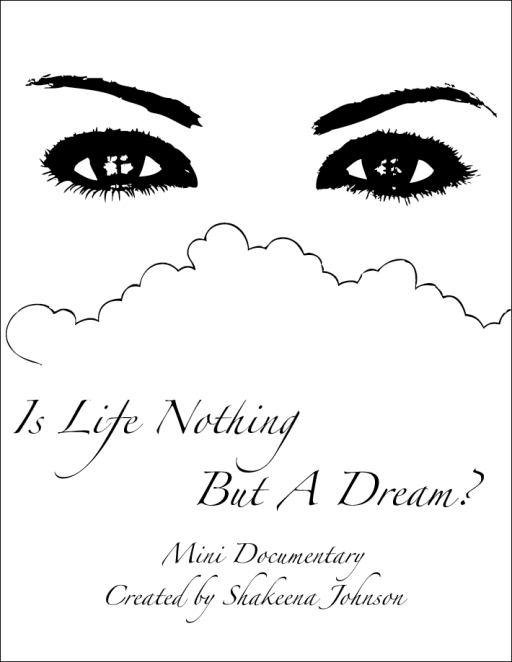
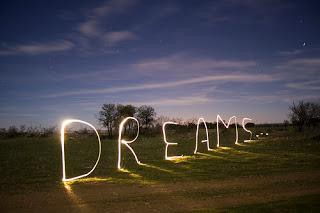
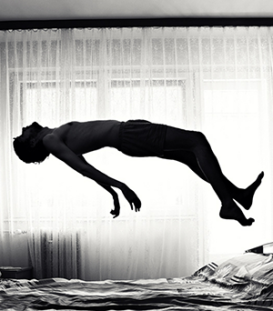
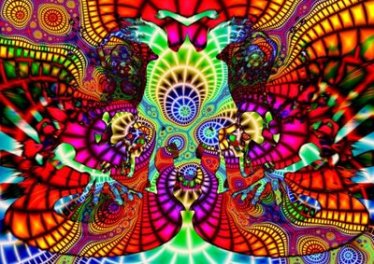
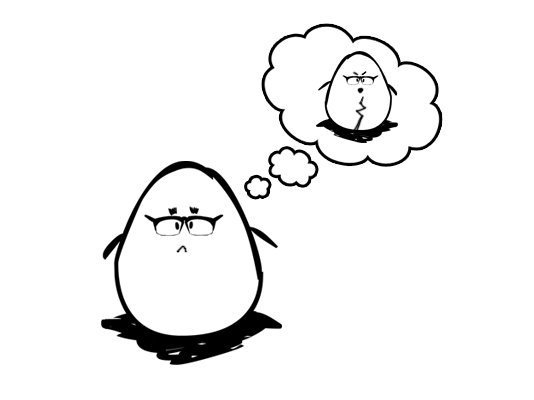
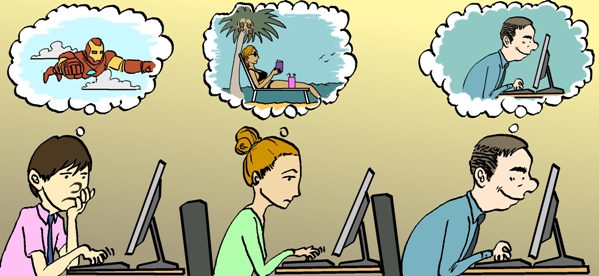
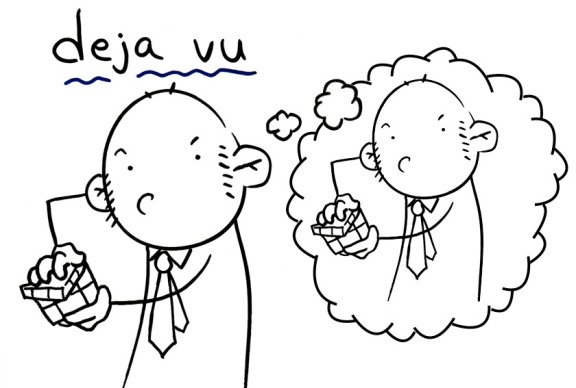
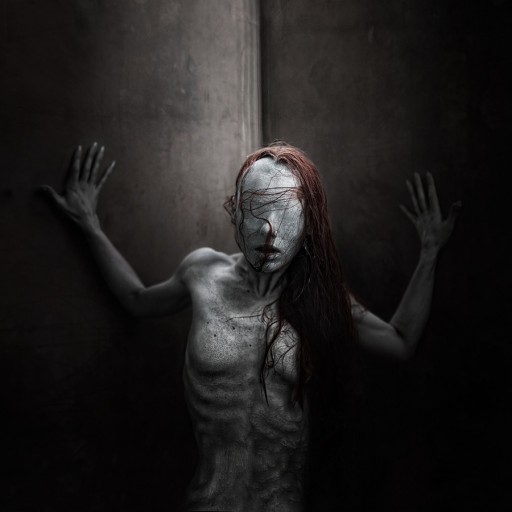
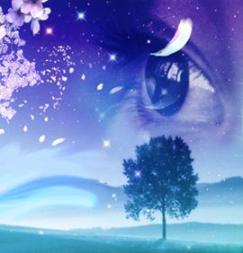
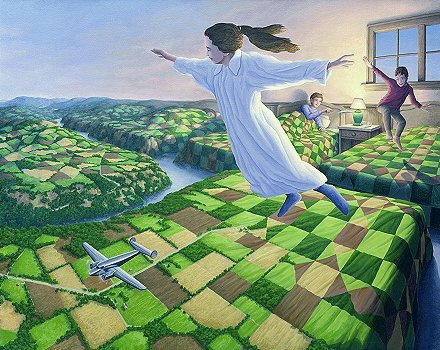

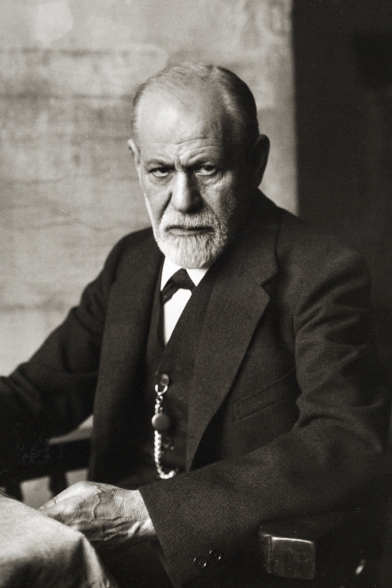
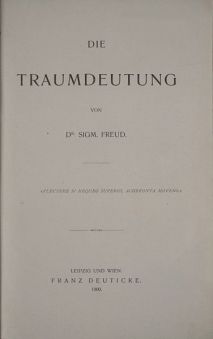
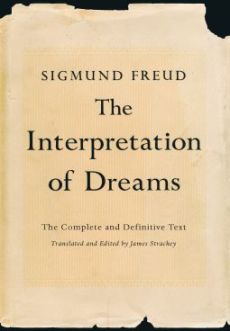
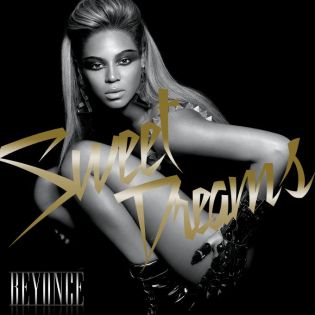
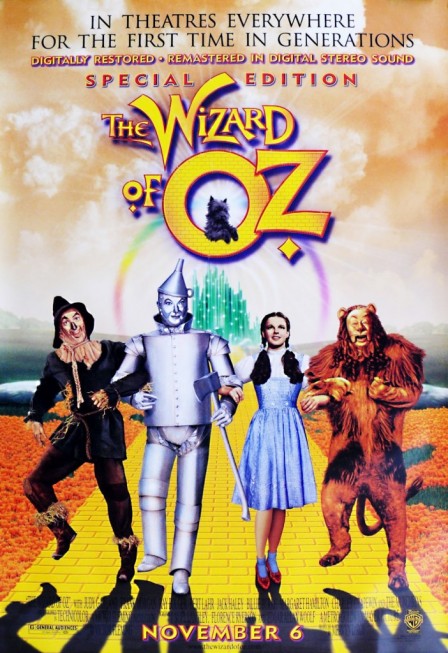
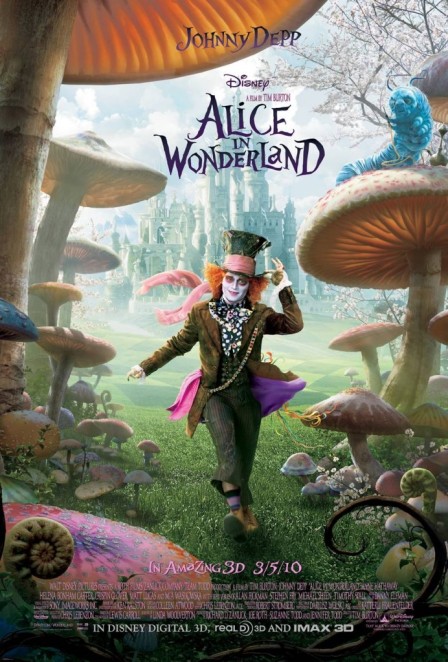
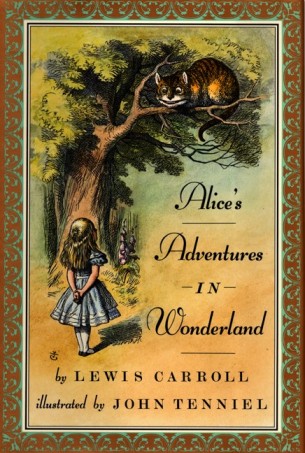
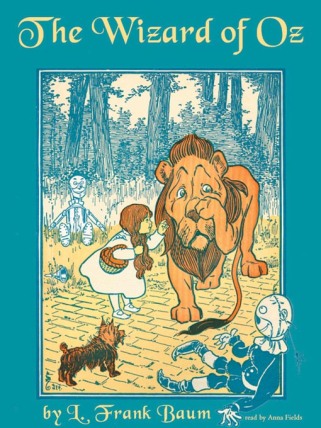
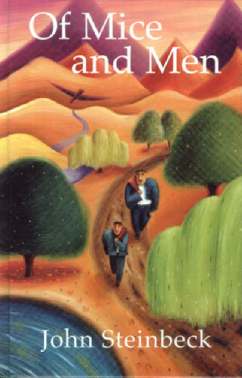
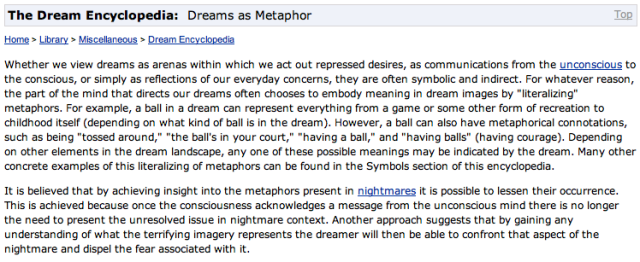
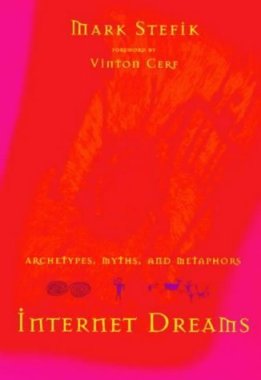
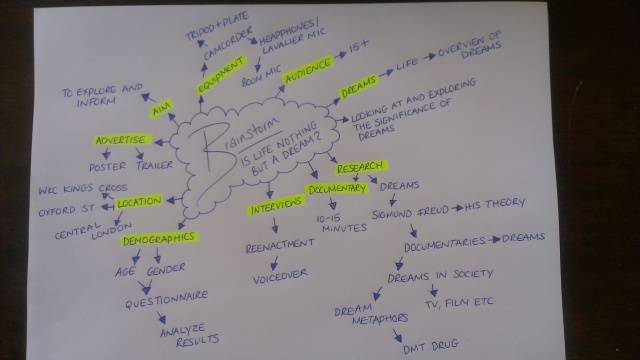
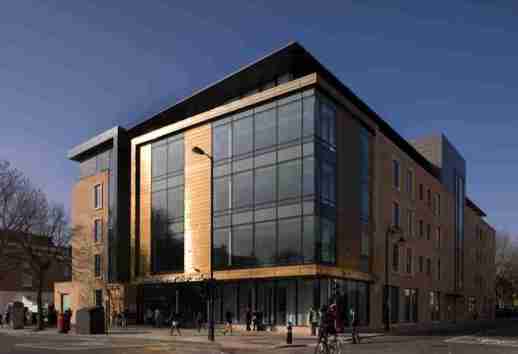


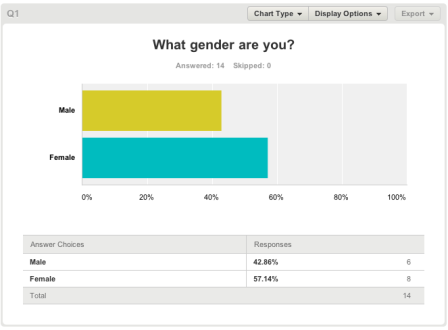
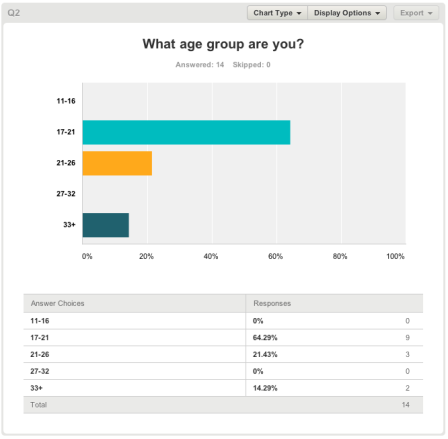
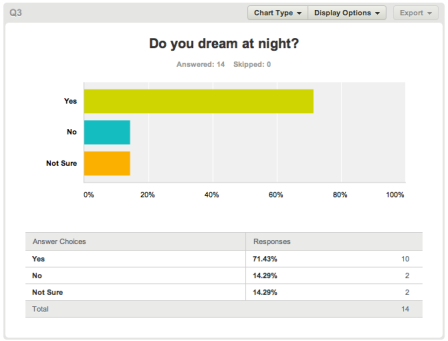
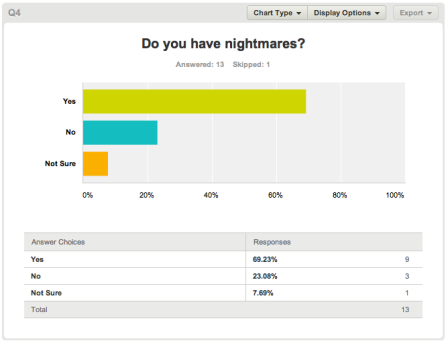
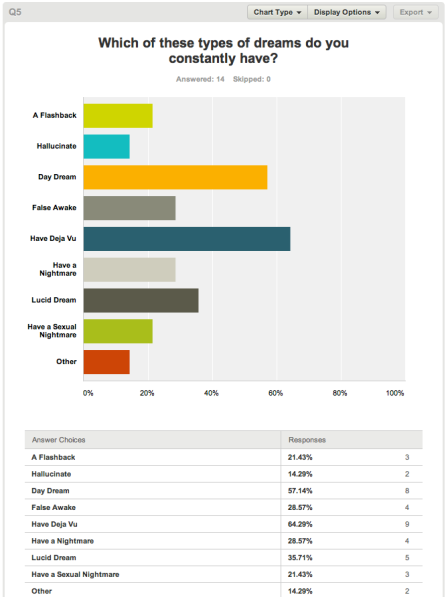
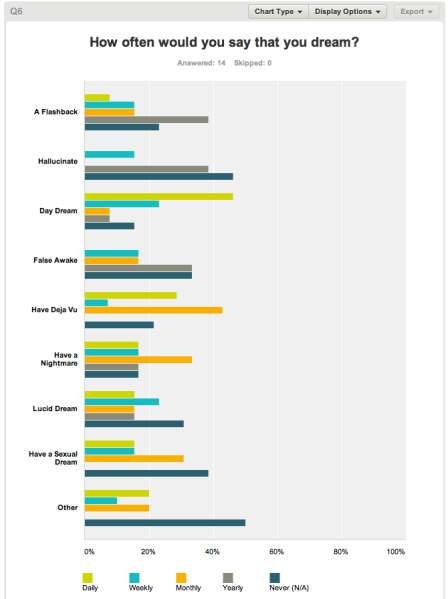
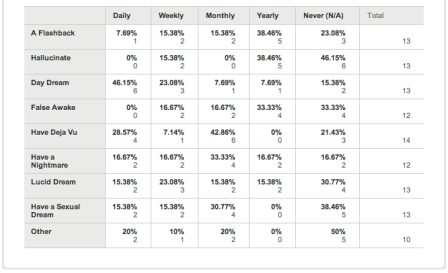
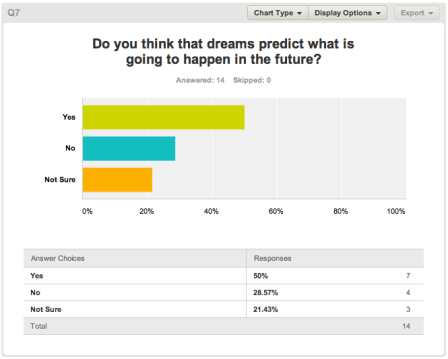
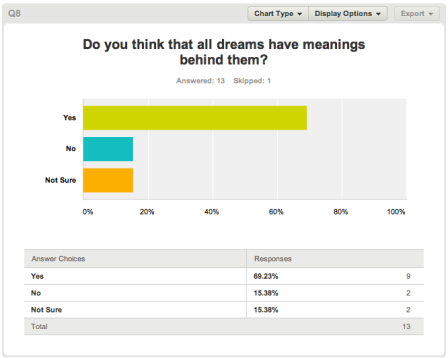
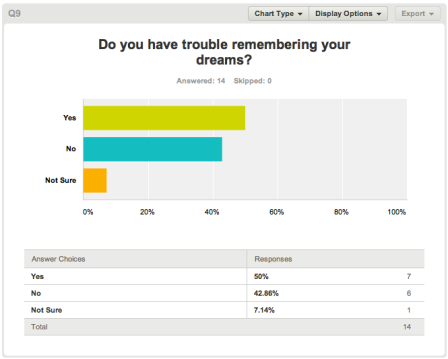
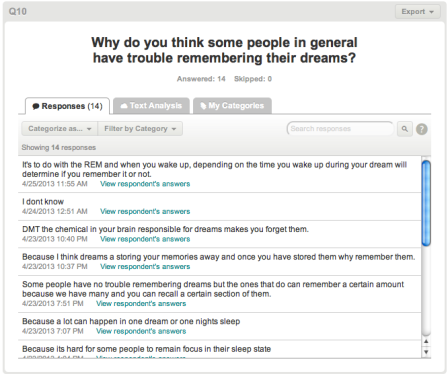
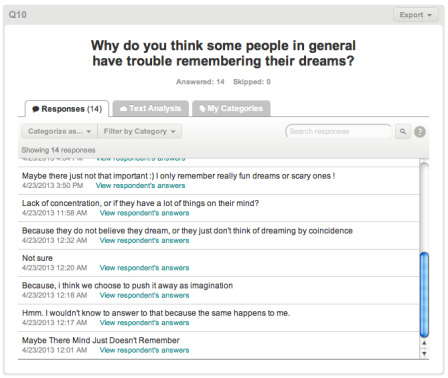
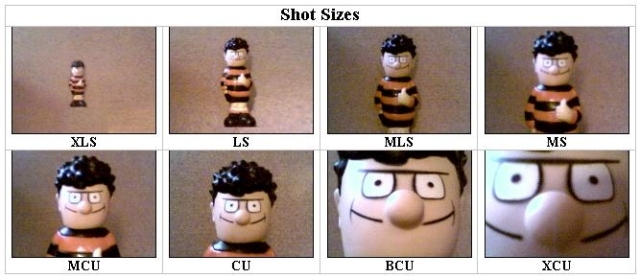
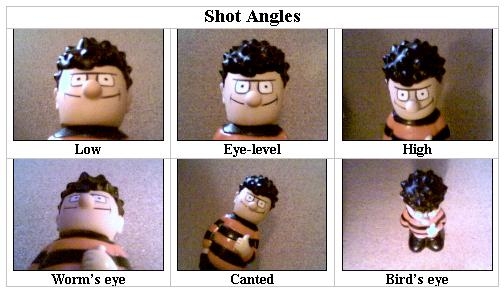
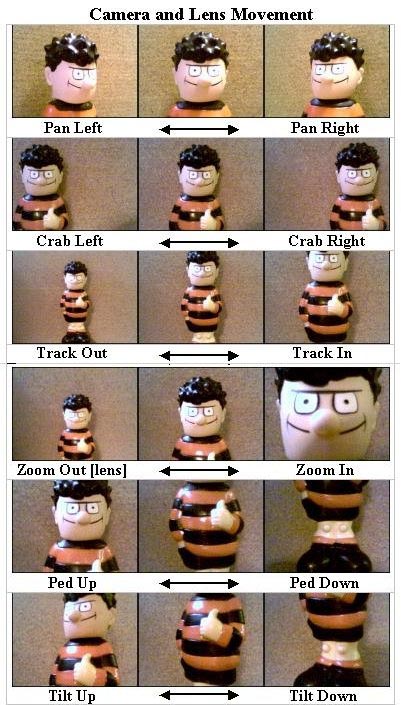
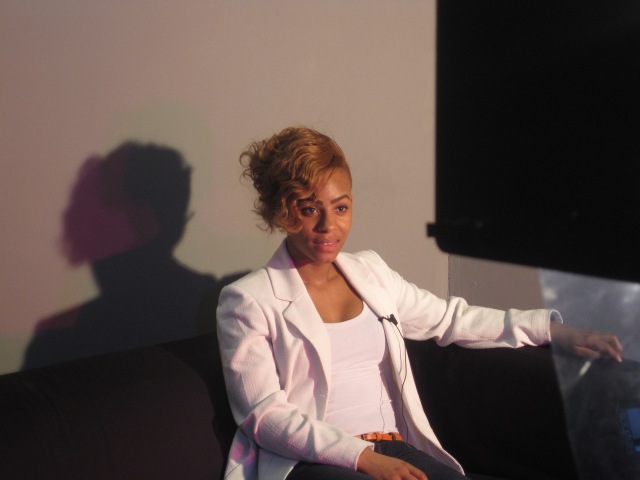
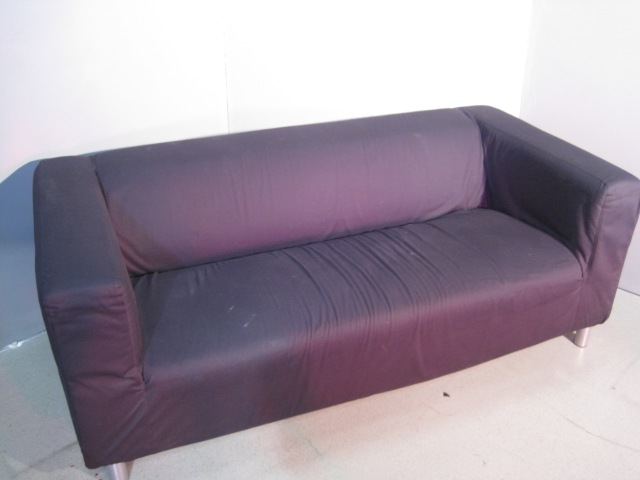
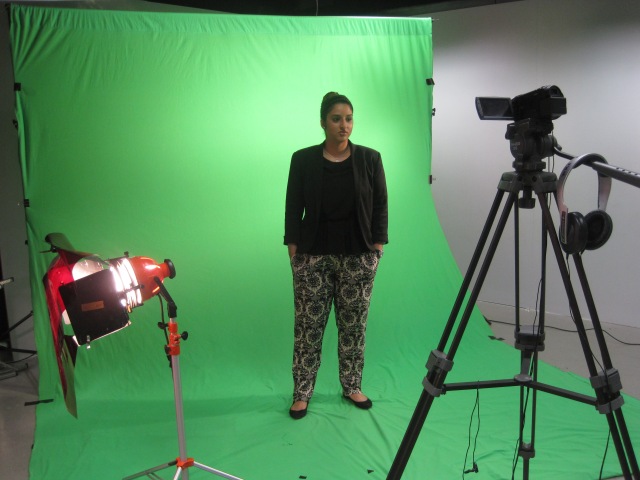
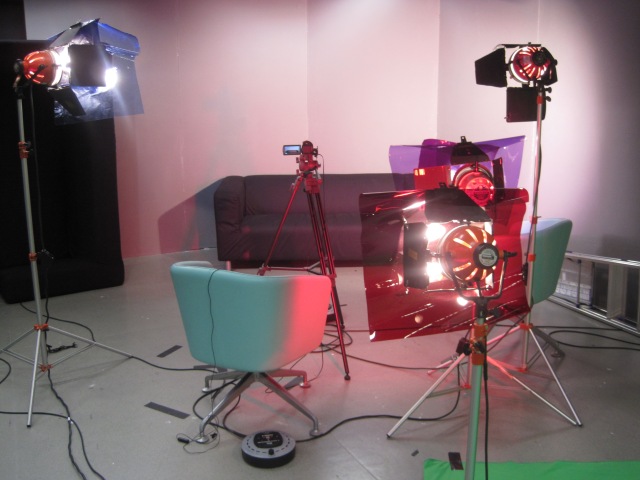
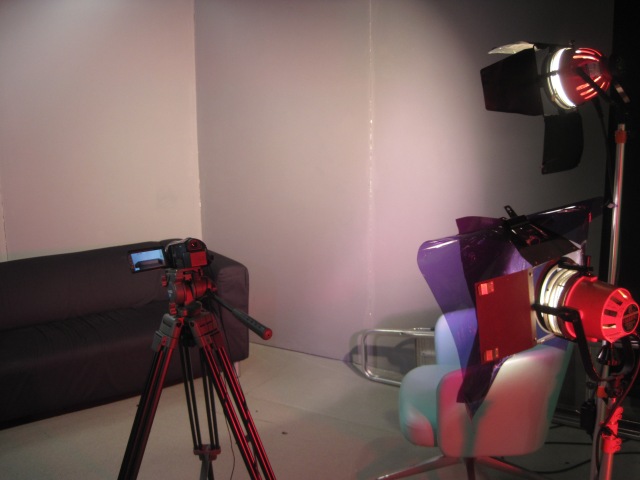
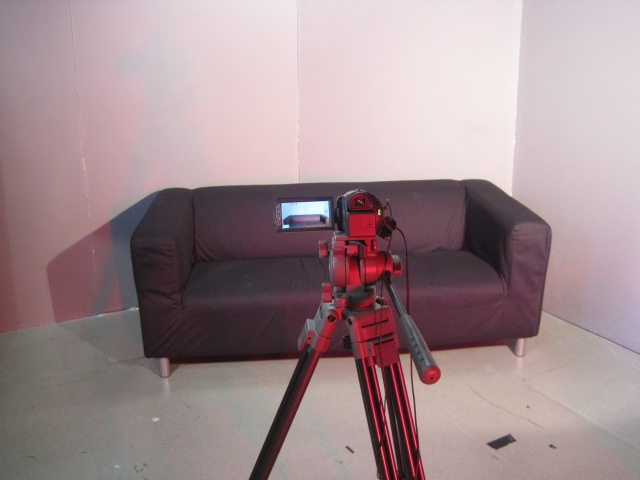
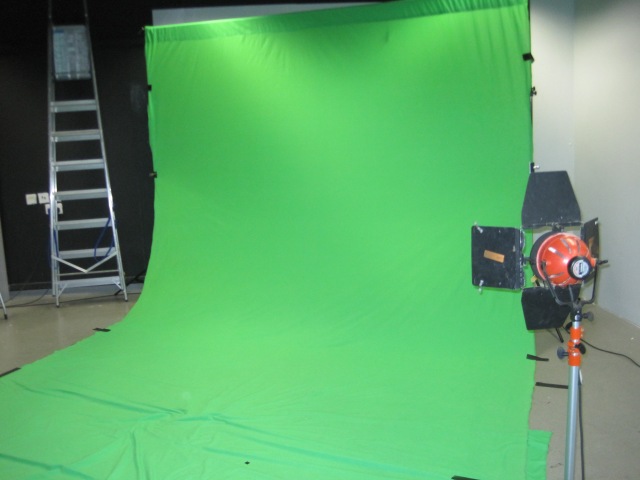
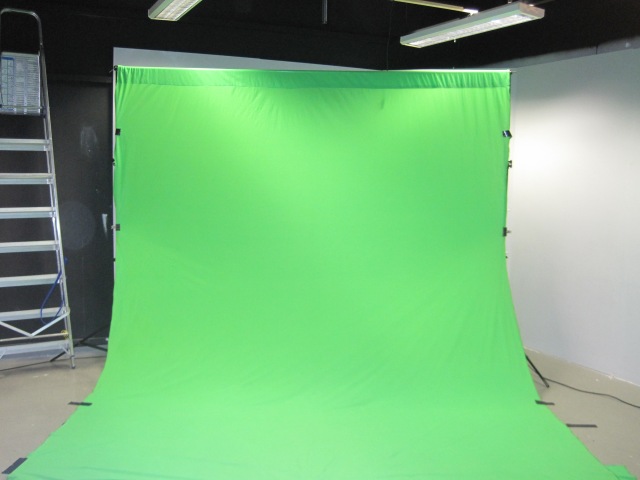

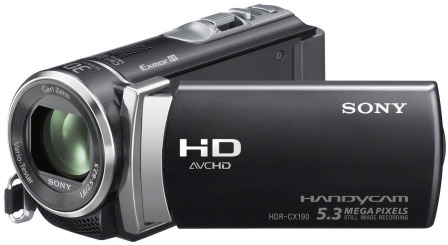
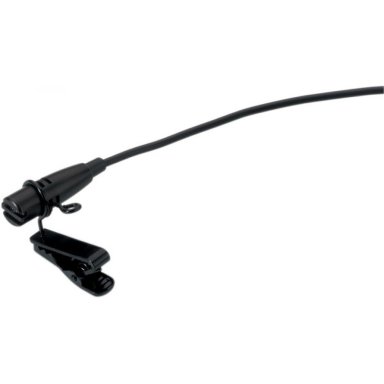

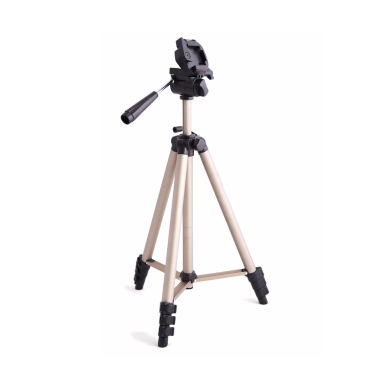
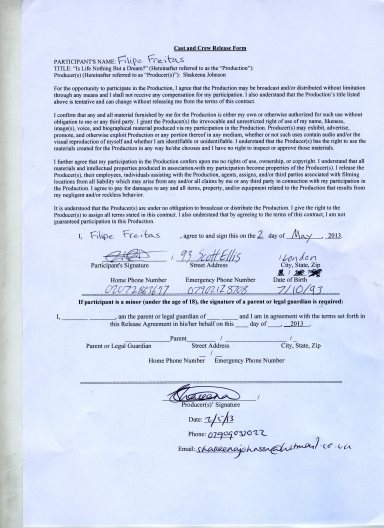
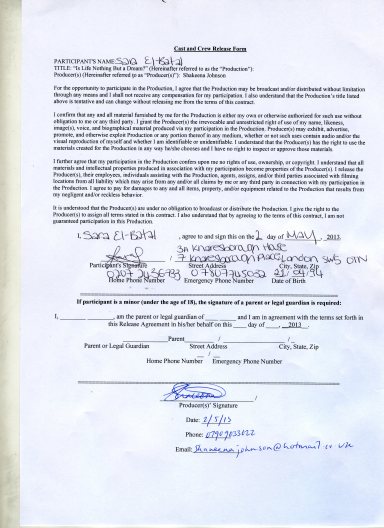
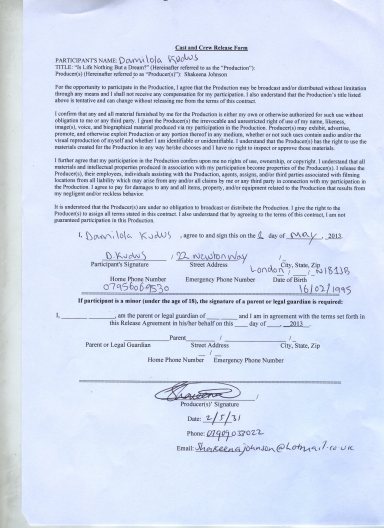
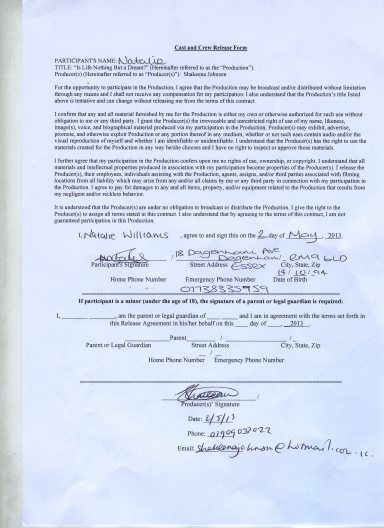
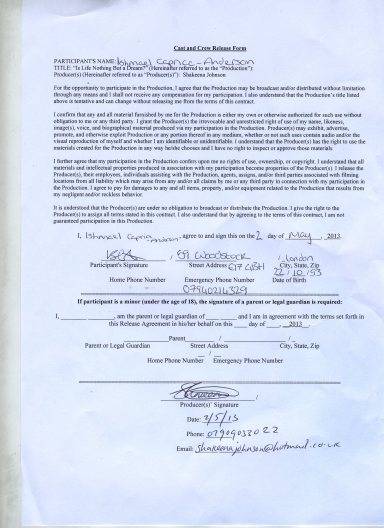
Very good research, planning, and final evaluation is very detailed.
Roxanne